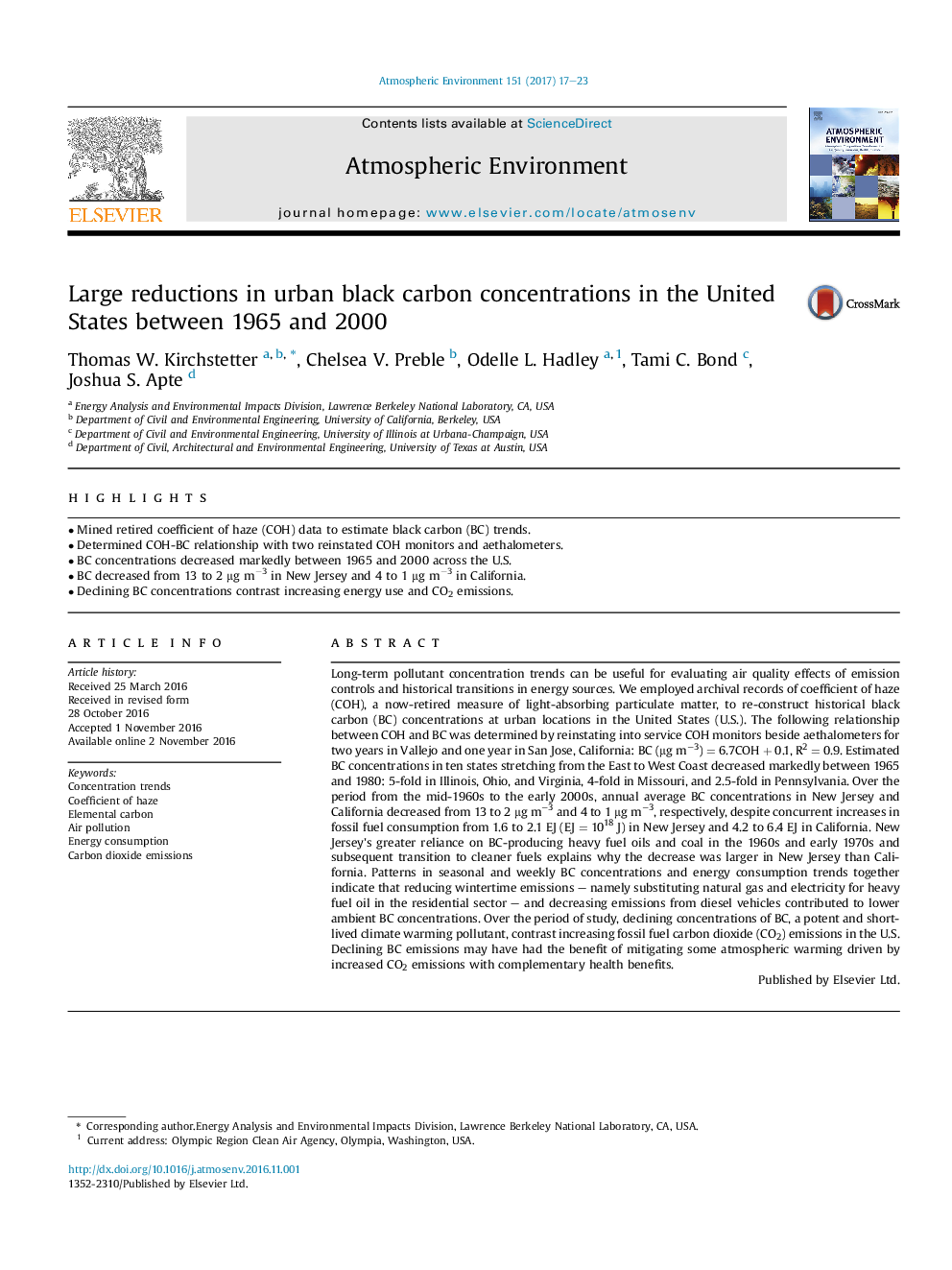| کد مقاله | کد نشریه | سال انتشار | مقاله انگلیسی | نسخه تمام متن |
|---|---|---|---|---|
| 5753205 | 1620323 | 2017 | 7 صفحه PDF | دانلود رایگان |
عنوان انگلیسی مقاله ISI
Large reductions in urban black carbon concentrations in the United States between 1965 and 2000
ترجمه فارسی عنوان
کاهش شدید غلظت کربن سیاه در ایالات متحده بین سال های 1965 و 2000
دانلود مقاله + سفارش ترجمه
دانلود مقاله ISI انگلیسی
رایگان برای ایرانیان
کلمات کلیدی
روند غلظت ضریب حساس، کربن المان آلودگی هوا، مصرف انرژی، انتشار دی اکسید کربن،
موضوعات مرتبط
مهندسی و علوم پایه
علوم زمین و سیارات
علم هواشناسی
چکیده انگلیسی
Long-term pollutant concentration trends can be useful for evaluating air quality effects of emission controls and historical transitions in energy sources. We employed archival records of coefficient of haze (COH), a now-retired measure of light-absorbing particulate matter, to re-construct historical black carbon (BC) concentrations at urban locations in the United States (U.S.). The following relationship between COH and BC was determined by reinstating into service COH monitors beside aethalometers for two years in Vallejo and one year in San Jose, California: BC (μg mâ3) = 6.7COH + 0.1, R2 = 0.9. Estimated BC concentrations in ten states stretching from the East to West Coast decreased markedly between 1965 and 1980: 5-fold in Illinois, Ohio, and Virginia, 4-fold in Missouri, and 2.5-fold in Pennsylvania. Over the period from the mid-1960s to the early 2000s, annual average BC concentrations in New Jersey and California decreased from 13 to 2 μg mâ3 and 4 to 1 μg mâ3, respectively, despite concurrent increases in fossil fuel consumption from 1.6 to 2.1 EJ (EJ = 1018 J) in New Jersey and 4.2 to 6.4 EJ in California. New Jersey's greater reliance on BC-producing heavy fuel oils and coal in the 1960s and early 1970s and subsequent transition to cleaner fuels explains why the decrease was larger in New Jersey than California. Patterns in seasonal and weekly BC concentrations and energy consumption trends together indicate that reducing wintertime emissions - namely substituting natural gas and electricity for heavy fuel oil in the residential sector - and decreasing emissions from diesel vehicles contributed to lower ambient BC concentrations. Over the period of study, declining concentrations of BC, a potent and short-lived climate warming pollutant, contrast increasing fossil fuel carbon dioxide (CO2) emissions in the U.S. Declining BC emissions may have had the benefit of mitigating some atmospheric warming driven by increased CO2 emissions with complementary health benefits.
ناشر
Database: Elsevier - ScienceDirect (ساینس دایرکت)
Journal: Atmospheric Environment - Volume 151, February 2017, Pages 17-23
Journal: Atmospheric Environment - Volume 151, February 2017, Pages 17-23
نویسندگان
Thomas W. Kirchstetter, Chelsea V. Preble, Odelle L. Hadley, Tami C. Bond, Joshua S. Apte,
